Want to attend the course but can’t make it on this date?
Fill in your details below and we’ll notify you when we next present a course in this area:
There are a lot of stories and myths about snakes. It seems that because these animals are often poorly understood people frequently believe they are malicious, looking for people to bite. The truth is that snakes are nervous animals and attempt to escape and flee given the opportunity. They will defend themselves if attacked and often attempt to intimidate and frighten off attackers and may appear aggressive until the attacker leaves them alone. Below are a selection of common myths and stories around snakes.
Myth 1: All snakes are venomous.
Fact: This is a common belief and is not the case. In southern Africa we have 176 different snakes species – only 20 of them are highly venomous and 30 of them are considered venomous – this leaves 126 species that are mildly venomous or non-venomous.
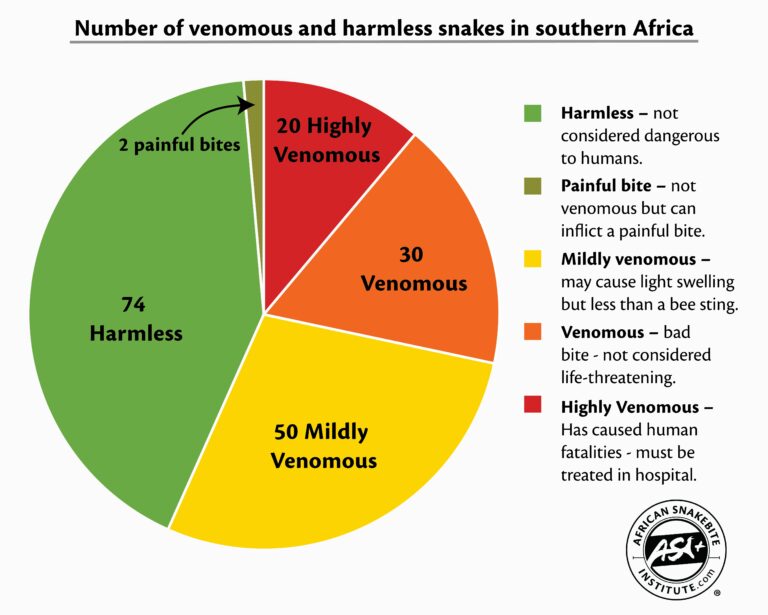
Myth 2: Snakebites should be cut and sucked.
Fact: A common story and one we often see in Hollywood movies too. It is a natural reaction if you are stung or bitten by a venomous animal to suck at the wound. Unfortunately, once venom is injected under the skin, it moves quickly through the tissue, attacking cells or nerves. As venoms are made up of proteins and enzymes, they cannot easily be sucked out of the tissue. In tests on rabbits, radio charged venom particles were injected into rabbits and after applying suction mechanisms it was found that less than 1% of the particles were removed. The other problem is that once you cut open skin, you increase the chances of getting bacteria into the wound and causing infections. This could cause complications to the bite.
Myth 3: Snakes are aggressive.
Fact: Most snakes try and avoid human encounters at all costs – but if they are cornered, they do defend themselves. This includes making themselves look larger (by making a hood, inflating their neck, or flattening themselves) hissing, striking out. Some snakes, like Cape Cobras and Rinkhals, will do mock-charges if harassed – coming a meter forward at speed before turning to flee. Usually “aggressive” actions from snakes are reactions to the person/threat. If you grab a Black Mamba by its tail, the first thing it does is spin around with the mouth open and lunges at the person. This is not aggression, this is defence. If you grab a feral cat by the tail they do the same thing.
Myth 4: Snakes chase people
Fact: A popular story told around campfires is about people being chased by snakes. Most notably, Black Mambas have a bad reputation for chasing people. The truth is far less exciting and of the hundreds of mambas our team has caught and dealt with over the years, we’ve never had a mamba chase us. In fact, it would be easier to catch them if they did chase you. What we find is that mambas are nervous, shy snakes that move off at the first signs of people approaching. They usually move off into thick bush, down a hole or into a rock crevice. However, if cornered and there is no way of escaping, mambas are dangerous and may strike out rapidly if approached. They usually open the mouth, showing the black lining and hiss as a warning first, before biting. We also find that mambas are often residential and will live in the same hole or rock crevice for a number of years if not disturbed. If approached, they are quick to retreat to their hole. If a person is in the way, the snake will come directly at the person in attempt to get to the cover behind the person. This may feel like the snake is chasing you but they are actually trying to get past the person, to safety.
Myth 5: Jumping out of trees
Fact: Snakes don’t jump or fly out of trees in southern Africa. They occasionally slip and fall out of trees or rafters. This usually happens when someone approaches the snake and it gets a fright and panics. But they aren’t waiting for people to walk below to jump and attack them. When we do snake removals, a snake in a tree is always a tough catch as the snakes usually move right up to the top of the tree to get away from the snake remover.
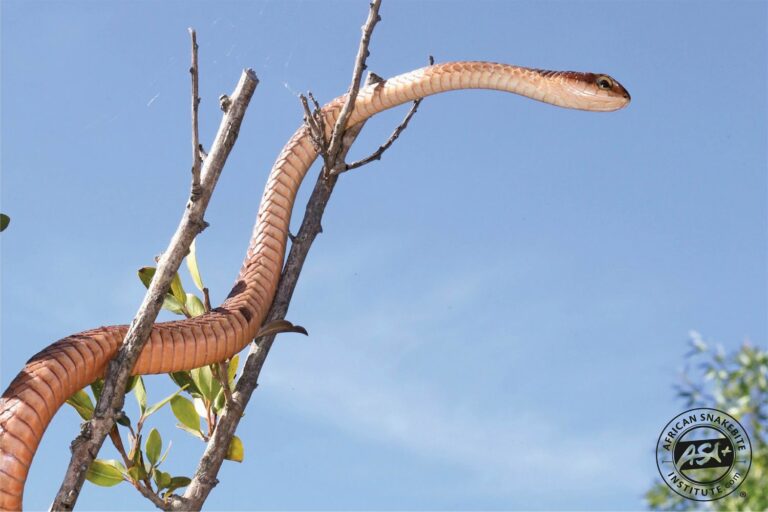
Myth 6: Snakes travel in pairs
Fact: Snakes live solitary lives. Occasionally we’ll see snakes, sometimes from different species, sharing the same hole or hollow in a tree trunk. This is usually competition for a good hiding spot. The only time we see snakes together is in the breeding season where males will be following females or sometimes when males fight each other for females. They do not move around in pairs or hunt together.
Myth 7: If you find one snake, it’s mate is nearby.
Fact: Snakes are solitary creatures, and unless it’s mating season or one snake is hunting the other, you very seldom find two snakes together. Some species may share a hideout in the cooler months. In the breeding season, the female snake releases pheromones (like a perfume) that attracts males. If a single female Puff Adder is found in the garden during the mating season, it is possible that one to a few males may appear over the next few days, all following the scent of the female.
Myth 8: A snake will avenge the death of its mate.
Fact: An interesting story, many people believe that if you kill a snake, the mate will come back and seek revenge. Snakes are largely instinctual animals and don’t really display emotion. Snakes also do not mate for life. Each mating season a female will mate with multiple males to ensure the offspring have variable genetics. Some people will even burn dead snakes as they are scared of the mate coming to avenge the death, and they believe that by burning the dead snake it takes away chances of the mate finding it.
Myth 9: If you see a baby snake, the mother is close by.
Fact: The majority of our snakes in southern Africa lay eggs. With the exception of Southern African Pythons and the Spotted Skaapsteker, the rest of the snakes lay eggs and leave. The eggs are usually laid underground, under a rock or in leaf litter, somewhere where the eggs are safe, warm and won’t dry out. The mother provides no maternal care like birds or mammals. The baby snakes will hatch between 70-90 days later and have to find food, water and fend for themselves immediately. This means that if you find one baby, you may find other babies in the area, but you won’t find the mother. Some snakes do give live birth like Rinkhals, Mole Snakes, Common Slug-eaters and most adders. These snakes drop live babies and move off. So you may find the mother nearby for these snakes, but she does not look after her babies.
Myth 10. Baby snakes are more dangerous than adults
Fact: This is a popular myth spread around on TV shows. The reality is that juvenile snakes have a much smaller venom quantity. Juveniles may be more nervous and often more likely to bite if harassed or stepped on, but the bites are usually mild compared to an adult. There are still ongoing studies on to see if the venom composition changes in snakes as they grow from juvenile into adults. Juvenile snakes often have a different selection of prey (for example eating frogs as juveniles and eating rats as adults) and the venom may change as the snake ages. But this requires more research.
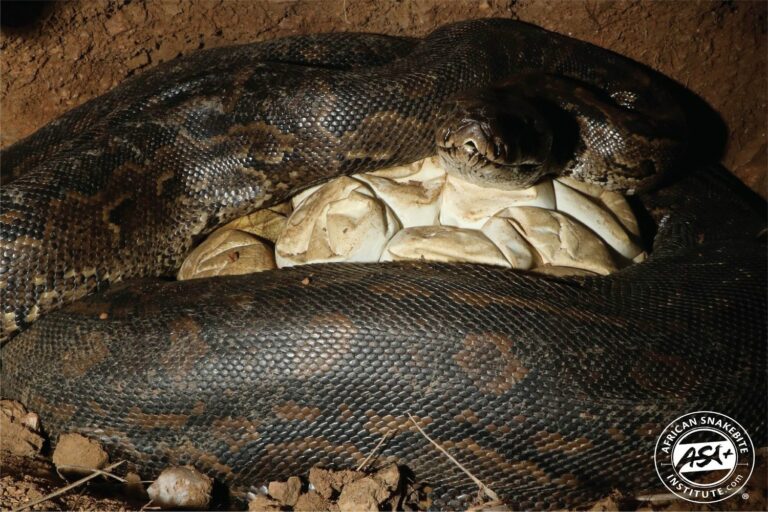
Myth 11: Snakes are deaf.
Fact: As snakes don’t have any ear openings, they do not hear airborne sounds well. They do however have an inner ear and can pick up and translate some vibrations from the lower jaw bone to the inner ear. So if you shout or whistle at a snake they will not react, but if you stump around or create noises that release vibrations, they may move off. If you watch videos of snakes “dancing” to men playing flutes in India, it is a trick. The snakes are defensive and face the threat (flute player). They will often follow the movement of the threat or object and so sway from side to side following the movement of the flute and appear to be “dancing”.
Myth 12: Snakes are blind.
Fact: Many people believe snakes are blind. Most snakes can see quite well although often it is movement-based. As soon as a prey item keeps still, the snake may struggle to see it well. They have other features, like a great sense of taste, which help them track down food or avoid predators. Some of the snakes that live underground, like the thread snakes or beaked blind snakes, have a large scale covering the eye making their vision greatly reduced, usually allowing them to sense light and dark.
Myth 13: A snake’s heart is in its tail.
Fact: A popular story, especially in areas like Limpopo. We suspect the story originates from the fact that many snakes (and other reptiles) will wiggle the tail to distract attackers into attacking the tail and leaving the sensitive head. If a snake has recently been killed (we see it often with roadkill) the tail will writhe back and forth. The truth is that a snake’s anatomy is very similar to most other animals and the heart is about a third of the way down the body. The tail section just has some vertebrate bones.
Myth 14: Snakes are slimy.
Fact: Snakes are covered in hard, dry scales which protect them whilst they slither through bush and over rocks and other rough surfaces. Many species have glossy or shiny scales which may give the appearance of it being wet or slimy.
Myth 15: The tongue can sting you
Fact: Snakes use their tongues to pick up scent particles in the air. The tongue is then brought inside the mouth and placed onto the Jacobsen Organ and the particles are tasted. This allows the snakes to work out if there is food, water, predators or mates in the area. As the tongue is forked, the snake can work out the direction in which the scent particle came from, which allows them to track the smell. The tongue cannot cause any harm.
Myth 16: Snakes dislocate their jaw to eat larger prey.
Fact: Snakes can eat prey items up to around three times as wide as the head. Where humans and other mammals have a single jawbone, snakes have two separate jaw bones, connected with a stretchy ligament. This allows them to stretch the lower jaw over the large meal but without dislocating any joints.
Myth 17: The skeleton of a snake is venomous.
Fact: Some people believe the skeleton of a snake contains toxins and if you stand on the bones barefoot and the bones pierce the skin, they will envenomate you. Venom is only stored in the venom glands in the cheek region of most snakes. The bones are not venomous. Additionally, most venoms will decompose rapidly in the sun and a skeleton will no longer have viable venom. However, many bones and skeletons contain bacteria and some diseases and if you stood on a skeleton and the bones pierce the skin, it is possible the area could become infected.
Myth 18: Puff Adders only bite the second person if there are several hikers walking past.
Fact: Studies from Wits University showed that when Puff Adders are concealed and in “camouflage mode” they are very unlikely to bite people, even if stood on. If a group of hikers walked past a concealed Puff Adder, it is unlikely to bite out. However, if Puff Adders are basking on a path and are exposed, they often feel vulnerable and may strike out if a threat appeared. They would bite the closest threat whether that was the first or last hiker.
Myth 19: If you are bitten by a snake you need to get to a river and drink water before the snake.
Fact: A popular story throughout Africa. The idea is that if you get down to the river and drink water after being bitten, you will be safe, but if the snake gets there first and drinks water, the venom takes effect, and you fall over dead. It is of course not true, and venom cannot be turned on or off by drinking water. A similar story applies to getting bitten by a snake in a tree where the victim must get out of the tree before the snake does so the venom doesn’t take effect.
Myth 20: Snakes won’t bite babies, breast-feeding women, or pregnant women.
Fact: Snakes can’t tell if a woman is pregnant, or if a child is breastfeeding and many babies are bitten by snakes every year. Snakes defend themselves and will bite anyone who is a threat or hurting the snake. In a case study in northern KwaZulu-Natal, around a quarter of all patients hospitalised after a snakebite were young children.
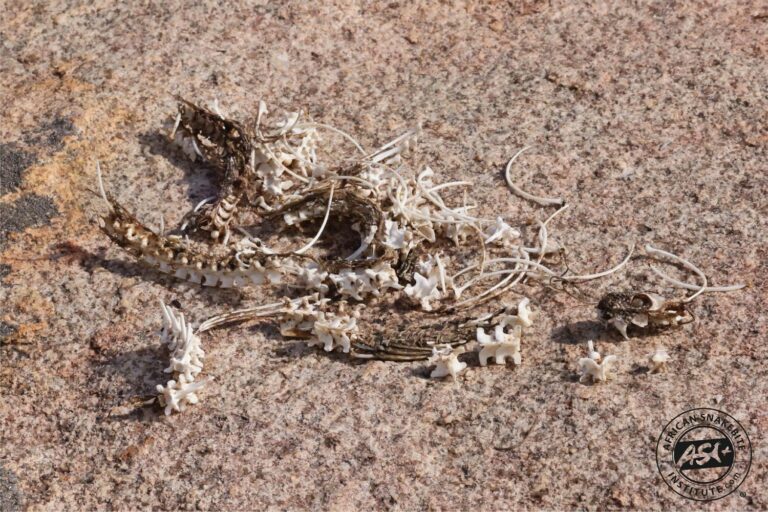
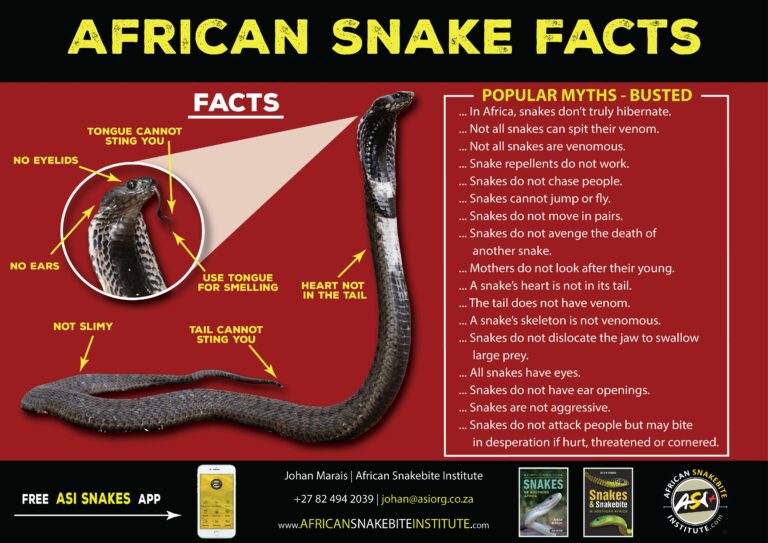
CONTACT US:
Product enquiries:
Caylen White
+27 60 957 2713
info@asiorg.co.za
Public Courses and Corporate training:
Michelle Pretorius
+27 64 704 7229
courses@asiorg.co.za
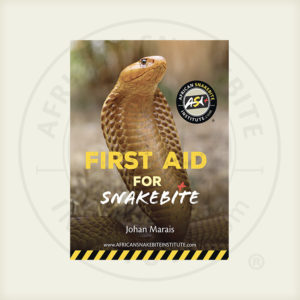 ASI First Aid for Snakebite Booklet
R40.00
ASI First Aid for Snakebite Booklet
R40.00
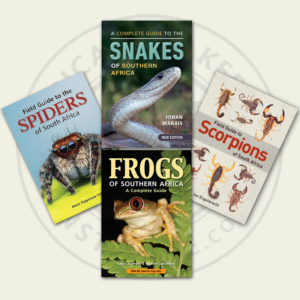 Rangers Book Combo 2
Rangers Book Combo 2
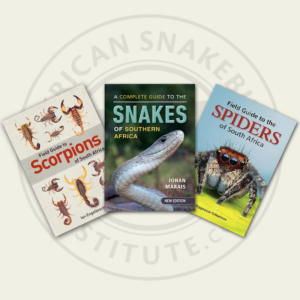 Rangers Book Combo 1
Rangers Book Combo 1
Want to attend the course but can’t make it on this date?
Fill in your details below and we’ll notify you when we next present a course in this area:
Want to attend the course but can’t make it on this date?
Fill in your details below and we’ll notify you when we next present a course in this area:
Want to attend the course but can’t make it on this date?
Fill in your details below and we’ll notify you when we next present a course in this area:
Want to attend the course but can’t make it on this date?
Fill in your details below and we’ll notify you when we next present a course in this area:
Want to attend the course but can’t make it on this date?
Fill in your details below and we’ll notify you when we next present a course in this area:
Want to attend the course but can’t make it on this date?
Fill in your details below and we’ll notify you when we next present a course in this area:
Want to attend the course but can’t make it on this date?
Fill in your details below and we’ll notify you when we next present a course in this area:
Want to attend the course but can’t make it on this date?
Fill in your details below and we’ll notify you when we next present a course in this area:
Want to attend the course but can’t make it on this date?
Fill in your details below and we’ll notify you when we next present a course in this area:
Sign up to have our free monthly newsletter delivered to your inbox:
Before you download this resource, please enter your details:
Before you download this resource, would you like to join our email newsletter list?